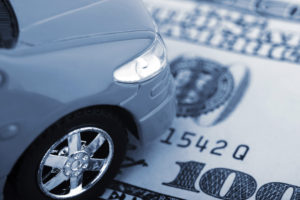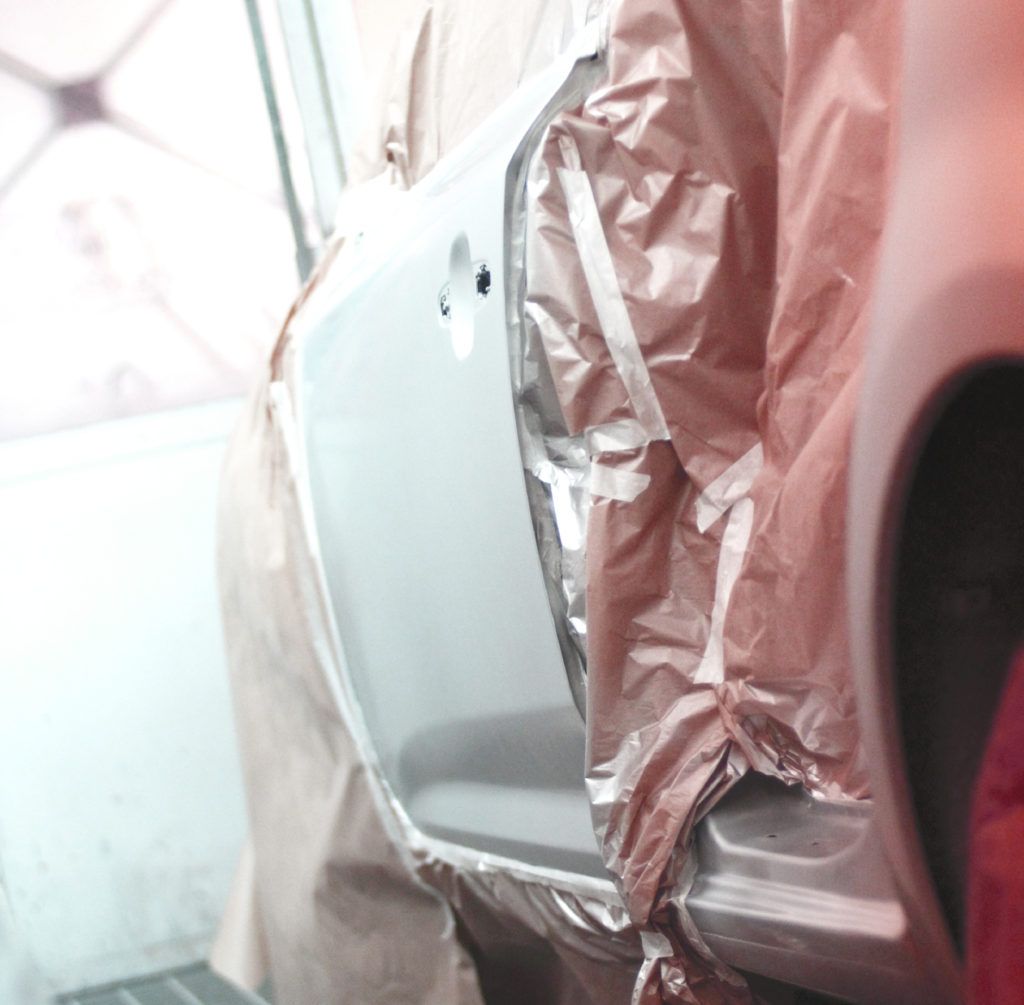
Pa., N.C. auto body shops argue RICO case against insurers should proceed
By onBusiness Practices | Insurance | Legal | Repair Operations
In a detailed response last month, Pennslyvania and North Carolina auto body shops provided hundreds of pages of evidence backing up RICO claims against the nation’s largest insurance companies.
The argument tries to connect the dots and back up their claims enough to survive insurers’ motions to dismiss — made to a judge so far skeptical of other states’ lawsuits sent to his U.S. Middle District of Florida court.
The new filing in Crawford’s Auto Center and K&M Collision v. State Farm et al seems to deliver to Judge Gregory Presnell what seem like logically obvious points about collision repair.
- The customer in a collision repair transaction is the vehicle owner, not the insurer.
- The insurer has a contractual duty to pay to restore a vehicle to pre-loss conditionm.
- No two crashes are the same, and different crashes will require different work.
“Defendant Insurers’ argue that ‘hard bargaining’ is not extortion,” attorneys for Hickory, N.C.-based K&M Collision and Downingtown, Pa.-based Crawford’s Auto Center wrote April 13. “The Defendant Insurers’ contention parrots the finding of the Court in its prior Order, that ‘there is nothing wrongful about a buyer threatening to take its business elsewhere unless the seller agrees to the buyer’s price.’ This contention rests on a distortion of the relationship between Plaintiffs and Defendant Insurers. It is the first and third party insurance claimants who are the Plaintiffs’ customers; Defendant Insurers are merely obligated by their insurance contracts with insureds to pay for the repairs to restore the vehicles to pre-loss condition. There is no dispute that all insurance claimants have the unfettered right to select the repair facility of their choice, and insurance claimants have selected the Plaintiffs and the proposed classes. Thus, this not Defendant Insurers’ ‘business’ simply to take elsewhere. Defendant Insurers will argue that insurance claimants select to take their vehicles elsewhere – after signing repair contracts with Plaintiffs – based on their potential out-of-pocket costs on the repairs, but that is based on Defendant Insurers’ misrepresentations of the required repairs. It is also based on Defendant Insurers’ disparaging and defamatory remarks to Plaintiffs’ customers as well as Defendants Insurers’ consistent steering (and attempted steering) of Plaintiffs’ customers.”
The shops also point out a flaw in the insurers’ attempt to have No. 1 “both ways.”:
“Defendant Insurers also argue that Plaintiffs’ RICO extortion claims are not viable because Defendants have not obtained any “property” from the Plaintiffs,” the shops’ attorneys wrote. “But they cannot have it both ways: ‘[W]here the defendant has claim of right to property and exerts economic pressure to obtain that property, that conduct is not extortion and no violation of the Hobbs Act has occurred.” (Citation omitted; emphasis added.) Defendant Insurers clearly argue, then, that their property right consists of the Plaintiffs’ repair services at the best price that they can pay for the services. As discussed below, Plaintiffs’ repair services for insurance claimants constitute property subject to extortion.”

Finally, the shops stress again — as shops in other cases have unsuccessfully tried — that there is no practical option to refuse work given customers’ use of the insurers in “approximately two-thirds of all insured repairs.”
“There is no alternative market in which collision repair facilities like Plaintiffs can operate. Plaintiffs must perform insured repairs to remain in business,” the shops wrote.
This point could still be a harder item to sell the court upon than the duty of an unwilling insurer to pay for a procedure necessary for pre-loss condition.
The shops provide impressive documentation of the latter with exhaustive examples (Here’s one exhibit the shops say applies to State Farm.) from estimates of items which were allegedly needed for particular repairs but refused by an insurer. In some instances, the shops said insurers’ alleged refusal to pay the shop’s rate deprived them of the difference in revenue; in others, the insurer allegedly flat-out refused the procedure, saying it wasn’t necessary or reimbursable. (The IPs, who have not responded to a past request for comment or said they don’t comment on litigation, are accused of facilitating this by providing “scrubbing” features. However, they are not named as defendants.)
“These illustrative samples demonstrate Defendants Insurers’ fraud in misrepresenting to Plaintiffs that repair procedures and the time spent on the procedures are not prevailing or competitive in the market, and/or are not required to perform repairs of like kind and quality, in order to return the damaged vehicles to pre-loss condition, meaning that Defendant Insurers purport to have statistically valid data showing that the majority of capable collision repair facilities either do not perform these procedures at all or that they do not charge for these procedures, and/or that the Defendants Insurers’ statistically valid data purportedly demonstrates that the majority of capable facilities perform these procedures in the amount of time that Defendant Insurers’ have arbitrarily listed on their estimates (reducing the times listed by Plaintiffs), and/or that the times and procedures listed in the IP guides already ‘Include’ these particular procedures, so that no additional time is warranted to perform these procedures,” the shops wrote.
But as to the labor rates, insurers like State Farm and Allstate pointed out there was always the option to charge the customer the difference on the labor rate.
“Plainly put, if Plaintiffs wanted to charge more than a Defendant was willing to pay, they could either charge the customer for the difference between their rates and the insurance company’s rates, or decline the job altogether,” the insurers wrote. “But Plaintiffs chose not to do so, because they did not want to cede the work to a competitor DRP facility that would charge no more than the Defendants were willing to pay. That is not an injury ‘by reason of’ any RICO violation. It is competition, pure and simple, and RICO was not designed to protect Plaintiffs from ‘[t]he Darwinian working of competition.'”
One difference here compared to the other cases rejected by Presnell involves a clearer argument how insurers might (or might not, the “black box” nature of prevailing rate calculations alleged makes it impossible to tell) be misrepresenting what a local market rate is to shops without any way for the repairers to verify the data independently. That could be particularly skewed if, as the collision repairers allege, the insurer relies on contractually negotiated deflated direct repair program rates.

Direct repair program shops — used in somewhere between 25-45 percent of all insurance repairs, the plaintiffs say, — agree to trade lower rates for insurer referral volume. Though claimants in many states have the right to go to any shop they want, those without a preference might and do seek recommendations from their insurer — a potentially lucrative source of business.
“Defendant Insurers misrepresent: (i) the labor rates and the type of labor that is required to perform many repair procedures – which must also account for (but do not) whether the facilities being paid those labor rates have the equipment, skill and/or certification to perform comparable repairs; (ii) the reimbursement for paint and materials used in repairs; (iii) the repair procedures that are necessary to restore the vehicle to pre-loss condition; and (iv) the time that it takes to perform the repairs,” the shops argued. “Further, Defendant Insurers mispresent that the Plaintiffs’ repair processes or the time to perform those procedures are not prevailing or competitive in the market or necessary to restore the vehicles to pre-loss condition, and/or that other collision repair facilities simply do not charge for those repair processes. All of the foregoing categories comprise the so-called prevailing rates for collision repairs that Defendant Insurers seek to impose. As discussed below, the prevailing rates are determined in a “black box”, and there is no way for Plaintiffs to obtain that information – or, more importantly, to assess or verify the accuracy of the representations of prevailing rates by the Defendant Insurers. Nor is there statistical validity to the prevailing rates, which are developed, at best, based on what Defendant Insurers pay for one-third of insured repairs (DRP shops), which is not close to a majority of the market, and cannot constitute ‘prevailing’ data.”
On the other hand, the insurers wrote that the plaintiffs didn’t seem to be very misled, and they still accepted the work.
“As this Court observed, ‘[i]n the absence of any reliance by the Plaintiffs, it is difficult to imagine a way in which the Defendants’ alleged misrepresentations as to the actual prevailing rate could have injured the Plaintiffs’ property or business.’ the insurers wrote. “Plaintiffs’ notion that ‘prevailing rate’ misrepresentations were made to someone other than Plaintiffs certainly lends no heft to that implausible claim.”
However, as the insurers indicate in their motion to dismiss, the case does seek class-action status on behalf of other shops — including some perhaps less savvy than the insurers say Crawford and K&M were.
Images:
This $100 bill road lacks potholes. (Aslan Alphan/iStock)
Two collision repairers are suing insurers, claiming RICO violations. (Jupiterimages/Photos.com/Thinkstock)
A refinishing booth is shown. (Lizalica/iStock)
